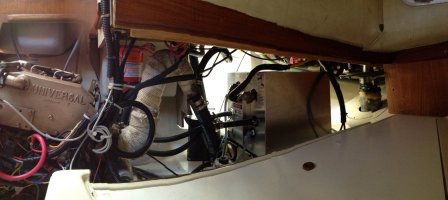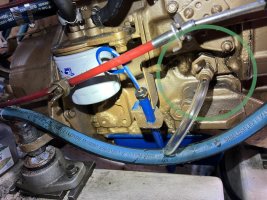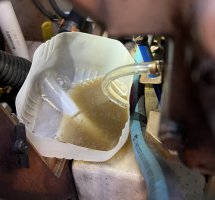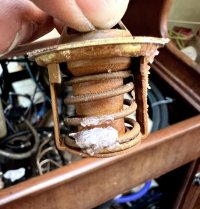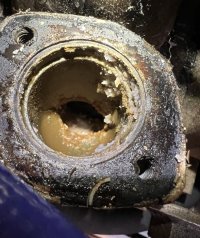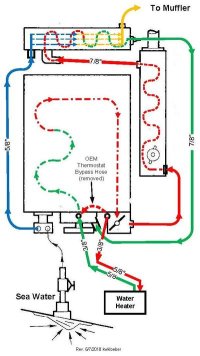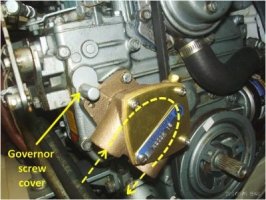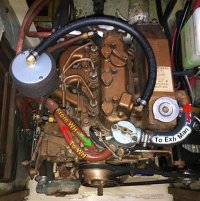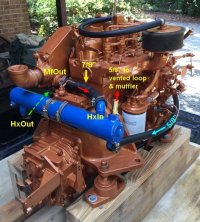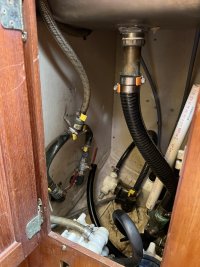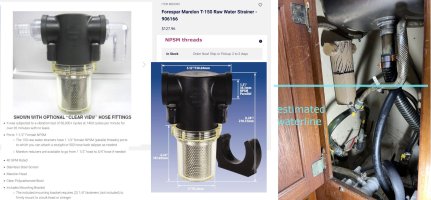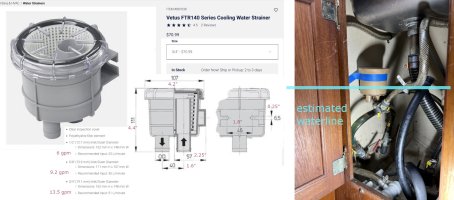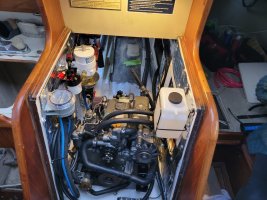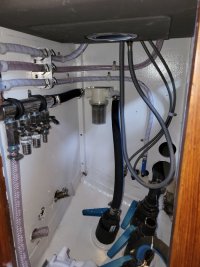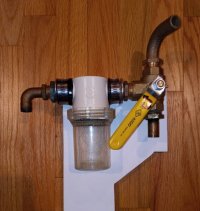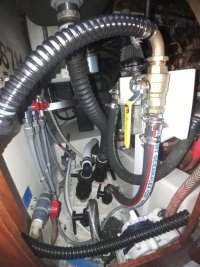My apologies, guys. I was talking from memory only about a system I last worked on in 2017, and I got some of it wrong....
The stock Ericson accumulation tank
does have an overflow hose that vents to the (plastic) overflow tank. In my setup (Universal M25), the exhaust/coolant manifold also has an overflow hose to the (plastic) overflow tank. That makes this diagram correct for my boat:
View attachment 51412
Here's the accumulation tank:
View attachment 51416
And here's the overflow tank with two ports on the bottom:
View attachment 51417 View attachment 51421
Maybe one of the keys to understanding the accumulation tank setup is this: The pressure cap on my accumulation tank is 7lbs, while the cap on the manifold is 14 lbs. So, under normal circumstances, the accumulation tank will always be the one venting to the overflow tank. The overflow vent on the manifold, then, is redundant, except in cases where the engine doesn't have a water heater with an accumulation tank installed
View attachment 51420 View attachment 51423
 goodoldboat.com
goodoldboat.com



